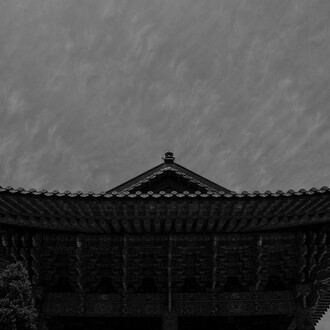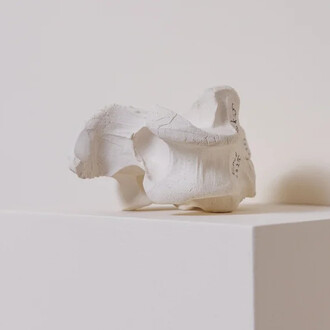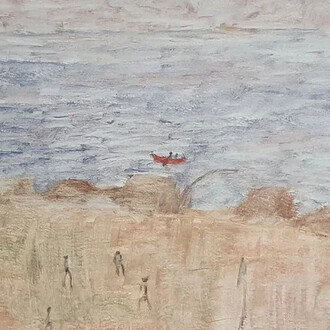Sapar Contemporary is pleased to announce their first exhibition of works by legendary American master weaver Ethel Stein (1917-2018). Stein who wore many hats, sculptor, puppet maker, textile conservator, educator, became best known as a textile artist celebrated for her masterful drawloom weavings that fused ancient techniques with modernist aesthetics. Stein's loom, which the artist designed herself, might have been the most special of its kind at the time, in that it was a Draw Loom that could be run by a single operator. It is now in the collection of the Art Institute of Chicago.
The exhibition is a collaboration with The Stein Family, which will contribute two-thirds of the sales proceeds received, less applicable expenses, to support the Department of Textile Conservation at The Metropolitan Museum of Art, where Ethel Stein volunteered for many years, and The Met’s accessibility programs for visitors who are blind or have low vision. Stein, who has lost her sight later in life, would have been delighted to see art lovers who are blind or have low vision at The Met. Sapar Contemporary will offer verbal description tours by appointment.
(Essay by Lucy Commoner, Conservator Emerita, Cooper Hewitt, Smithsonian Design Museum, Adjunct professor, NYU Institute of Fine Arts)
Ethel Stein (1917–2018) was an American textile artist celebrated for her masterful drawloom weavings that fused ancient techniques with modernist aesthetics. Born in New York, she spent much of her childhood with her uncle Abbo Ostrowsky, founder of the Educational Alliance art school, where she encountered artists like Rafael and Moses Soyer, Chaim Gross, and Zero Mostel. Her formal education began at the progressive Hessian Hills School in Croton-on-Hudson, emphasizing hands-on crafts such as shearing sheep, spinning, and natural dyeing, under teachers like George Biddle and Wharton Esherick. Though Stein's pursuit of weaving would not begin until she was in her early forties, she studied, taught and worked in diverse art forms: life drawing at the Traphagen School of Fashion, sculpture with Chaim Gross (alongside Louise Nevelson), and stage design, including sets for off-Broadway and Boston theaters like the Ford Hall Forum Players' 1939-40 season featuring Clifford Odets' "Awake and Sing." In the late 1930s, while teaching at Harvard's Busch-Reisinger Museum, she absorbed Bauhaus principles at the Graduate School of Design, studying under Josef Albers during his 1941 sabbatical. This experience profoundly shaped her focus on geometry, spatial dynamics, and color, and also brought her in contact with Anni Albers. There, she met her husband, architect Richard Stein, and after World War II, they settled in Croton, embracing environmental sustainability.
Stein's career spanned multiple media before centering on weaving in the 1960s, sparked by friendships with local artisans like Irene Miller, Vera Neumann, Lenore Tawney, Klara Cherepov, and Mary Walker Phillips. Initially crafting utilitarian items from unconventional yarns—like dog fur—she transitioned to intricate geometric and figurative designs using continuous warp and weft structures, enhanced by ikat dyeing for soft edges. Finding her 16-harness loom limiting, she modified a Finnish countermarch loom into a unique single-operator drawloom—described by curator Milton Sonday as one-of-a-kind—enabling mastery of damask, double cloth, and lampas. Her work evolved in phases: damask explorations (1981–1995), double cloth and lampas for figural illusions (1995–1999), and a damask return emphasizing composition and materials (2000 onward). From 1987 to 1993, she analyzed historic fabrics at the Metropolitan Museum's Textile Conservation Department, deepening her structural knowledge. Earlier, her resourceful puppet-making from old socks led to producing 10,000 units and designing characters like Lamb Chop for Shari Lewis's 1960–63 TV show.
Despite working counter to trends and prioritizing personal exploration over promotion, Stein gained late recognition, with her first retrospective, "Ethel Stein, Master Weaver," at the Art Institute of Chicago in 2014–2015, showcasing works from 1982 to 2008. Her deceptively simple weavings investigated light, form, and even politics, like her opposition to the Indian Point nuclear plant. After age 90, Stein required assistance with loom threading due to macular degeneration, she completed final pieces relying on touch. Stein died on March 9, 2018, at 100. Her loom resides at the Art Institute of Chicago. As curator Daniel Walker noted, her profound innovation lay in making complex techniques appear effortless while revealing simple forms' intricacies.
















